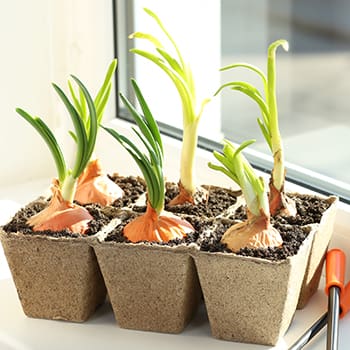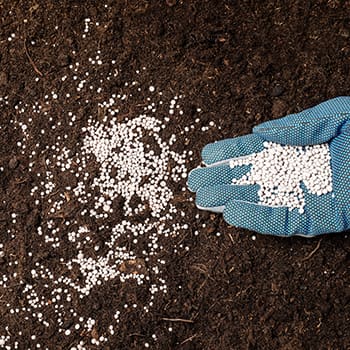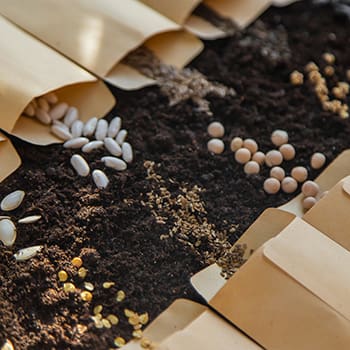As winter sets in and the cold nestles deep into your bones, you may be dreaming of days in your garden under the warm sunlight and bright, happy plants surrounding you. Worry not, dear gardener; you don’t have to wait until the chilly days are gone to add a little bit of gardening back into your life. Here, we’ll talk about all the things you shouldn’t do as the blustery winds blow against your windows and your heating bill climbs to the moon. Let’s get started.
Don’t Wait To Plant
There are thousands of plants that you can grow inside and each of them has its own benefits and great reasons to keep them around. Even if you’re just growing wheatgrass to provide roughage for your pets or to have wheat grass juice (which is packed with nutrients), it’s still something green and pretty to look at and enjoy. Better yet, it’s one of the easiest things in the world to grow. Honestly, you barely need to water it to get a good crop in just a couple of weeks.
Beyond that, there are always herbs and seasonal flowers, though many of these are poisonous to pets. Use the ASPCA poison chart if your pets have access to your plants and are 100% certain that what you’re growing is either safe for them or you’re keeping them in places that your pets cannot access. The last thing anyone wants is a vet bill around the holidays.
If you’re finding trouble looking for plants that are pet-safe (or a little kid friendly), you can always build a tiny trellis against a window and grow, again, herbs or salad greens in festive shapes. Maybe make a little reindeer bush from fresh rosemary or work tiny peppers onto the form of a star. The possibilities are endless.
Don’t Wait To Fertilize
If you don’t live in an area that is permafrost all winter, there is no reason to neglect your garden. Use this time to build up beneficial bacteria, give extra food to the grubs and bugs that help your plants, and fertilize your ground. This may mean that you’re putting in fertilizer stakes even though the plants aren’t really up taking much nutrition at the moment or that you’re adding things like baked and ground eggshells to the top soil to allow it to break down slowly over the winter.
Whatever it is that you choose to do, make sure that you’re doing something. This can even be as simple as taking a pin aerator and gently running it over the surface to keep your soil loose and comfortable. Compaction is an enormous issue that happens throughout the colder months because so many people just walk all over their gardens and are very confused when springtime aeration is not enough to let their fresh, baby plants stretch into their new roots.
Don’t Wait To Trim Fruiting Plants
Even if you’ve brought in small fruit trees and fruit vines, you can take this time to trim and nip extra growth away from young plants and encourage them to put that effort into fruiting next year, instead.
In the case of indoor fruit plants, such as miniature lemon trees, allowing them to remain indoors encourages them to stay in complete foliage all year long. This is not natural for them and often stresses these small, delicate trees to a point where they stop producing and (sometimes) fade away. So what do we suggest that you do to prevent this?
Allow these trees to go through a natural cycle if at all possible. While it isn’t in any citrus’s best interest to be exposed to frigid temperatures, allowing the plant to settle near a cooler window and be exposed to 50F-ish temperatures will help it realize that the cooler weather is here and it’s time to drop its leaves.
Related: Dwarf Fruit Trees You Can Grow In A Tiny Space
If you decide to continue to let the plant carry on as if the world is simply enjoying springtime, trim away buds and allow an increase in fertilizer throughout these months. If you are going to push a citrus tree to be in full foliage all year long, you’re going to need to feed it, in the same manner, you would through the production months.
We are covering citrus in particular in this section due to a massive rise in miniature indoor citrus trees and their huge popularity, especially as holiday gifts. Their fresh scent and pretty appearance are usually very attractive to those looking for a gift for a gardener and many end up with Meyer lemon trees in miniature.
If you are not a citrus person and have berries, kiwis, or something along these lines, these vines and plants are likely already finished for the season whether you want to push them into another or not. Allow them to be dormant, but remember that if they are hardened off for the outdoors, try to keep them that way. A little plastic wrap or simply hiding in the garage may be enough for all but the most bitter of cold.
Don’t Wait To Order New Seeds
Get the jump on ordering your seeds and plants now even if they won’t be available to ship for months to come (or if you won’t be using them). The most popular sites are almost always sold out of new varieties and faithful standbys (that aren’t something like Fordhook Zucchini or Blue Lake Green Beans) by the time comes to starting plants indoors. In fact, if you’re reading this after Black Friday in the US, you may have already missed out on some neat new varieties this year.
Earlier and earlier, especially after the beginning of the pandemic, gardeners have flocked to the idea of trying to provide their own tables. We are in a growing season and the wonder and beauty of planting is always a great thing to see others start with. Unfortunately, that means many seeds are selling out faster than ever. However, you can still have a chance to find seeds here.
Final Thoughts
I strongly advise that those who are deeply serious and set on certain varieties order them as quickly as they can. This ensures that you get the plants you want (or need, in some cases) and you get them on the dates that work for you.
This may be the most negative article we’ve ever published, but we’re doing it for positive reasons! Do you have suggestions for things people should never do during the winter? Or is there something you regret having done in the past? Let us know in the comments down below. We’d love to hear what you have to say. And, as always, Happy Gardening!
You may also like:
This Homemade Device Can Power Up Your Entire House 7 Days in a Row (Video)
The Most Dangerous Tree In The U.S.
How To Make A Pressure Sensor Pad To Know When You Have An Intruder On Your Property











